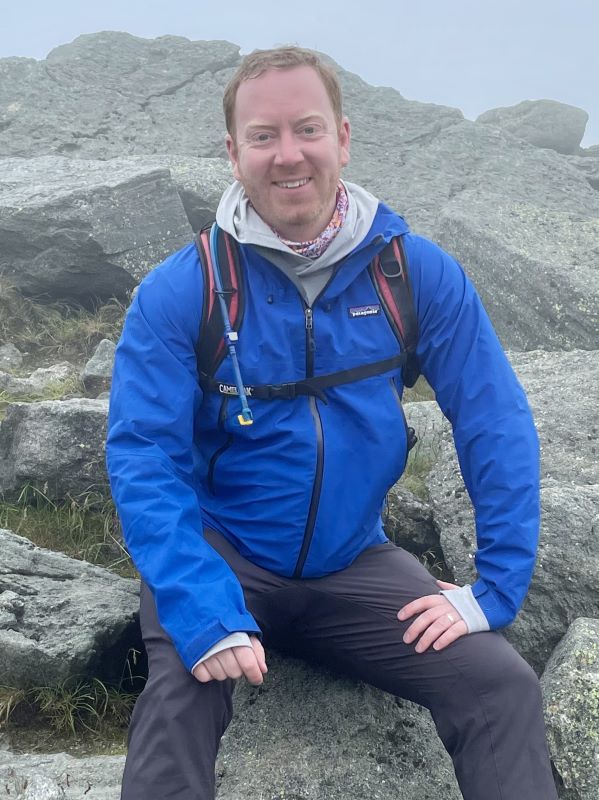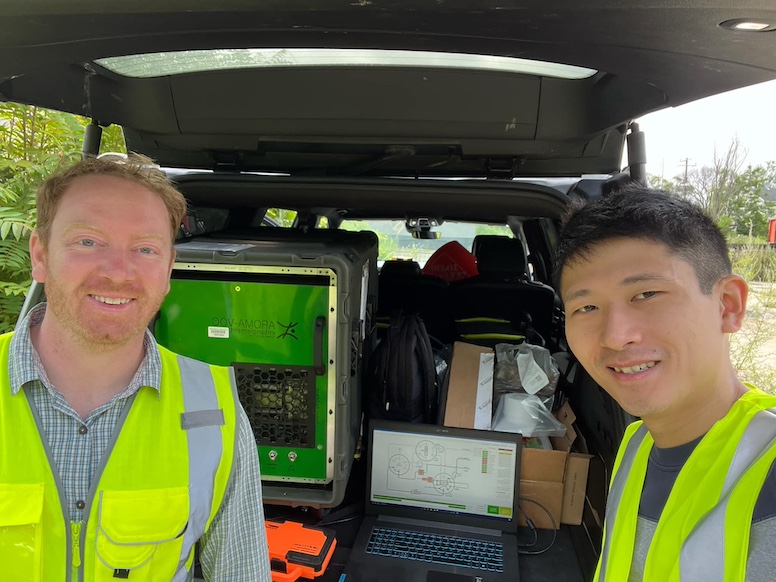CLEAR Trainee Spotlight: Dr. Brendan O'Leary
Dr. Brendan O'Leary is a postdoctoral scholar, working on CLEAR projects 1 & 2: Field Study and Sensing & Remediation. He graduated from Wayne State with a PhD in Civil Engineering & Urban Sustainability in 2023.
Please tell us about yourself and your work.
I am a postdoctoral fellow with CLEAR at Wayne State University in Detroit. My work focuses on understanding human health and exposure risks in urban environments. I recently earned a dual-title Ph.D. in Civil Engineering and Urban Sustainability from Wayne State University. Prior to that, I completed my master’s degree in Geology at Wayne State and earned a bachelor’s degree in Geology and Environmental Science from Allegheny College. Before my Ph.D., I was part of the Geospatial Determinants of Health Outcomes Consortium (GeoDHOC), an interdisciplinary team addressing urban health challenges in Detroit, MI, and Windsor, ON. This multi-institutional study, involving partners from the Detroit Medical Center, Henry Ford Health, Wayne State University, Health Canada, and the University of Windsor, assessed neighborhood-scale human exposure to air toxins. This experience introduced me to the potential of applied Earth sciences in understanding the impacts of chemical exposures on public health and urban communities, ultimately inspiring me to pursue a postdoctoral fellowship at CLEAR.

My research centers on understanding how contaminants move through groundwater, air, and soil in urban environments, as well as their potential impacts on human health. By integrating Earth and biological sciences with civil engineering, I aim to develop innovative field screening techniques and numerical modeling approaches to characterize and remediate environmentally impacted sites. Currently, I am focused on developing these approaches to understand the subsurface transport of volatile organic compounds (VOCs). A key aspect of my work is the development of a method called phytoscreening, which uses plant tissue to detect belowground contaminants. This fieldwork will inform spatial modeling of VOC distribution on neighborhood and city-wide scales.
Outside of my research, I enjoy playing the Uilleann and Highland bagpipes and competing with my soccer team, Scripps Park, in the Woodbridge neighborhood.

Any big news lately?
This past year, I completed a K.C. Donnelly externship with Dr. Kelly Pennell at the University of Kentucky. My goal in the K.C. Donnelly externship was to train on the AROMA-VOC tool for real-time subsurface contamination profiling. This past June, I collaborated with Dr. Pennell and trainee Herman Tay at the University of Kentucky’s Superfund Research Center, learning to calibrate and deploy the AROMA-VOC. The following month, Dr. Pennell and Herman Tay joined the WSU-Superfund Research Center team in Detroit, MI, where we deployed the AROMA-VOC at a WSU-Superfund Research Center field location. During our one-week field period, we developed a dataset evaluating VOC concentrations in soil vapor and sewer lines, advancing our center’s ability to assess environmental conditions and contamination risks.
Most recently, I helped co-author Chapter 6: Urban groundwater issues related to Great Lakes Water Quality that was part of the publication Groundwater science relevant to the Great Lakes Water Quality Agreement: An updated status report, prepared by the Annex 8 Subcommittee for the Great Lakes Executive Committee. This was a joint publication between Environment and Climate Change Canada and U.S. Environmental Protection Agency. Additionally, my recent CLEAR research has been published in the journal Environmental Pollution. The citations for these texts are below:
O’Leary, B. F., Miller, C. J., Selegean, K., & Hood, G. R. (2025). Comparing conventional and phytoscreening methods to detect subsurface chemical contaminants: a test case of volatile organic compounds in an urban setting. Environmental Pollution, Volume 365, 125374. https://doi.org/10.1016/j.envpol.2024.125374
Erickson, M., Hoysh, S., O’Leary, B. F., & Van Stempvoort, D. (2024). Chapter 6: Urban groundwater issues related to Great Lakes Water Quality. In M. Mohammed, H. Reeves, & J. W. Roy (Eds.), Groundwater science relevant to the Great Lakes Water Quality Agreement: An updated status report. Prepared by the Annex 8 Subcommittee for the Great Lakes Executive Committee. Published online by Environment and Climate Change Canada and U.S. Environmental Protection Agency.
What's next on the horizon for you? (Or, for your research)
In partnership with Michigan’s Environment, Great Lakes, and Energy department (EGLE) and Henry Ford Health (HFH), my research group has recently pioneered Michigan's first Natural Language Processing (NLP) software to transform historic environmental reports into machine-readable datasets, significantly enhancing the ability to analyze connections between environmental exposures and health outcomes. I am actively pursuing external funding and exploring commercialization opportunities for this innovative tool. Additionally, I am part of a research cohort from Michigan State University, HFH, and CLEAR, assessing the linkage between density and proximity of environmentally contaminated sites and preterm birth outcomes. My contribution, along with seeking to develop a better understanding of urban groundwater flow, aims to utilize geostatistical approaches to analyze EGLE and HFH datasets to evaluate public health impacts.
What has been the most exciting/fulfilling part about working with CLEAR?
Through my support with CLEAR, I have experienced the benefit of seeing how interdisciplinary collaborations and community engagement can lead to actionable research that benefits sustainable urban development. Through the K.C. Donnelly externship, I was able to significantly expand my knowledge of field sampling methods through the use of real-time screening tools that are not available at my home institution. The mentorship I received through CLEAR and the externship, including from Dr. Carol Miller, Dr. Glen Hood, and Dr. Kelly Pennell—have not only shaped my technical expertise but also provided invaluable models for independently leading research projects. Dr. Pennell has been deeply involved, hosting me at the University of Kentucky and collaborating on fieldwork in Detroit, MI. Her genuine enthusiasm for our work continues to be a source of inspiration. The mentorship I’ve received has significantly shaped my overall career goal, which is to continue this combination of research priorities so that my background in Earth science contributes to improved public health outcomes in vulnerable communities.